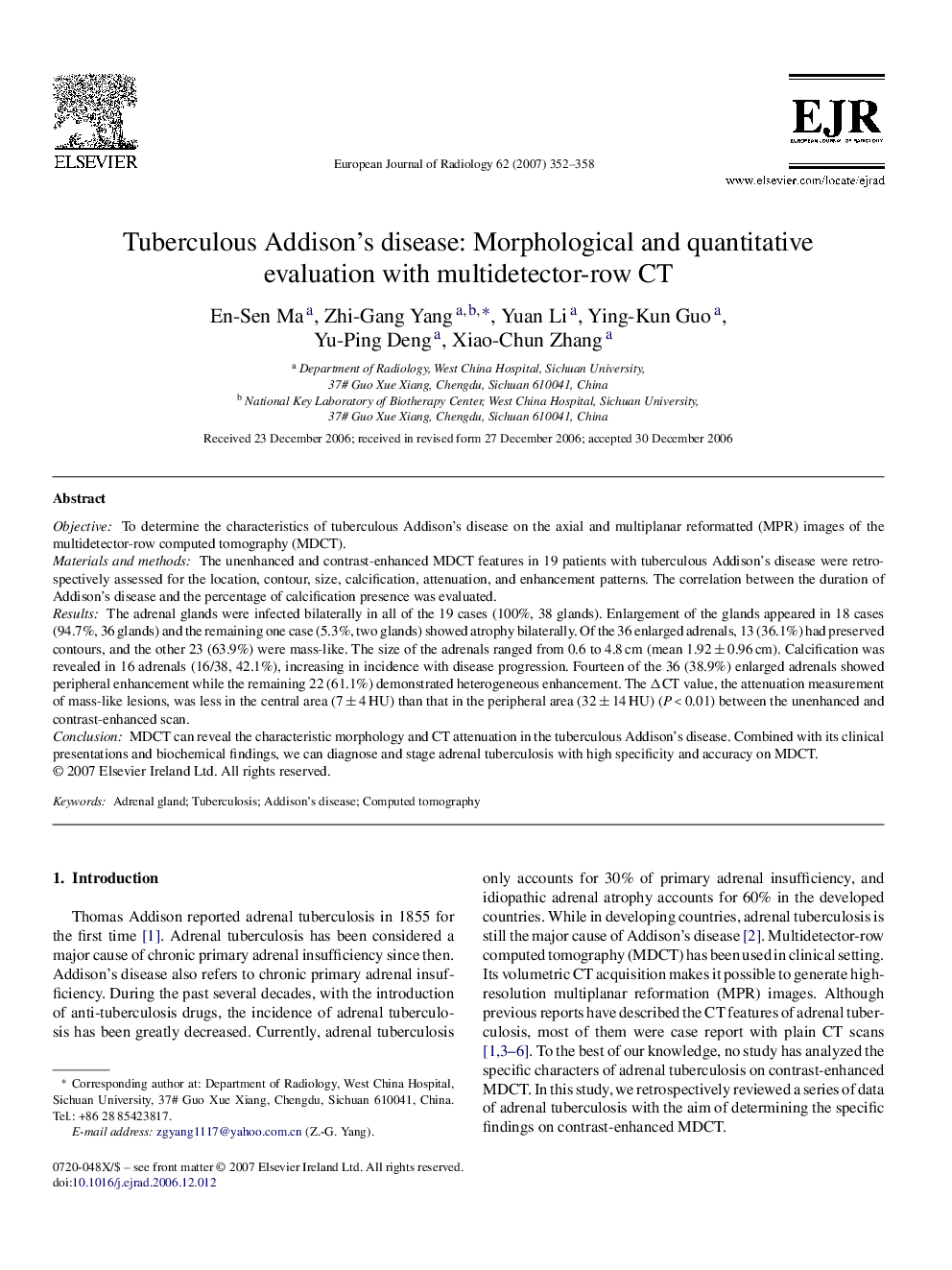| Article ID | Journal | Published Year | Pages | File Type |
|---|---|---|---|---|
| 4228157 | European Journal of Radiology | 2007 | 7 Pages |
ObjectiveTo determine the characteristics of tuberculous Addison's disease on the axial and multiplanar reformatted (MPR) images of the multidetector-row computed tomography (MDCT).Materials and methodsThe unenhanced and contrast-enhanced MDCT features in 19 patients with tuberculous Addison's disease were retrospectively assessed for the location, contour, size, calcification, attenuation, and enhancement patterns. The correlation between the duration of Addison's disease and the percentage of calcification presence was evaluated.ResultsThe adrenal glands were infected bilaterally in all of the 19 cases (100%, 38 glands). Enlargement of the glands appeared in 18 cases (94.7%, 36 glands) and the remaining one case (5.3%, two glands) showed atrophy bilaterally. Of the 36 enlarged adrenals, 13 (36.1%) had preserved contours, and the other 23 (63.9%) were mass-like. The size of the adrenals ranged from 0.6 to 4.8 cm (mean 1.92 ± 0.96 cm). Calcification was revealed in 16 adrenals (16/38, 42.1%), increasing in incidence with disease progression. Fourteen of the 36 (38.9%) enlarged adrenals showed peripheral enhancement while the remaining 22 (61.1%) demonstrated heterogeneous enhancement. The ΔCT value, the attenuation measurement of mass-like lesions, was less in the central area (7 ± 4 HU) than that in the peripheral area (32 ± 14 HU) (P < 0.01) between the unenhanced and contrast-enhanced scan.ConclusionMDCT can reveal the characteristic morphology and CT attenuation in the tuberculous Addison's disease. Combined with its clinical presentations and biochemical findings, we can diagnose and stage adrenal tuberculosis with high specificity and accuracy on MDCT.
